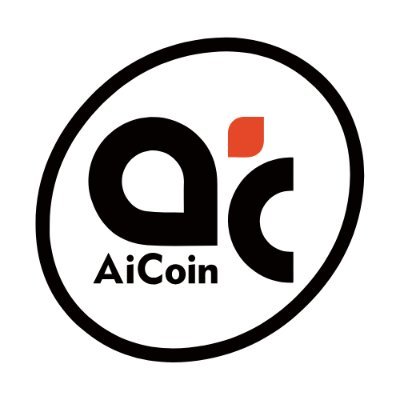
En lien avec la crypto
Calculateur de prix
Historique des prix
Prédiction de prix
Analyse technique
Guide d'achat crypto
Catégorie de crypto
Calculateur de profit
En lien avec le trading
Achat/Vente
Dépôt/Retrait
Spot
Marge
Futures USDT-M
Futures Coin-M
Bots de trading
Copy Trading
Earn
Pré-marché
Actualités de la crypto
Actualités Push Protocol
Alerte Push Protocol
Calendrier des événements
ICO
Airdrop

Prix de Push ProtocolPUSH
Que pensez-vous de Push Protocol aujourd'hui ?
Prix de Push Protocol aujourd'hui
Quel est le prix le plus élevé de PUSH ?
Quel est le prix le plus bas de PUSH ?
Prédiction de prix de Push Protocol
Quel sera le prix de PUSH en 2026 ?
Quel sera le prix de PUSH en 2031 ?
Historique des prix de Push Protocol (EUR)
 Prix le plus bas
Prix le plus bas Prix le plus élevé
Prix le plus élevé 
Données de marché de Push Protocol
Historique de capitalisation Push Protocol
Avoirs Push Protocol par concentration
Adresses Push Protocol par durée de détention

Notes Push Protocol
À propos de Push Protocol (PUSH)
Qu'est-ce que Push Protocol ?
Push Protocol, précédemment connu sous le nom d'Ethereum Push Notification Service (EPNS), représente une avancée cruciale dans le paysage de la communication Web3. En tant que réseau de communication décentralisé, Push Protocol facilite les interactions en temps réel, de portefeuille à portefeuille, entre diverses applications, notamment les notifications, les chats, les appels vidéo, etc. Ce projet comble une lacune importante dans l'écosystème Web3 en permettant une communication directe, sécurisée et interopérable sans dépendre des plateformes centralisées traditionnelles. En s'appuyant sur la technologie blockchain, Push Protocol garantit que les utilisateurs conservent un contrôle total sur leurs données, améliorant ainsi la confidentialité et la sécurité des interactions numériques.
Le protocole repose sur le principe de la décentralisation, ce qui permet à un large éventail d'applications (DApps, contrats intelligents et services Web3) de communiquer avec les utilisateurs directement par le biais de leur adresse de portefeuille. Cette méthode de communication directe améliore non seulement l'expérience de l'utilisateur en lui fournissant des informations opportunes et pertinentes, mais ouvre également de nouvelles voies d'engagement et d'interaction dans l'espace Web3. L'introduction de Push Protocol marque une étape importante vers un environnement Web3 plus intégré et plus facile d'utilisation, posant les jalons d'une adoption plus large et de cas d'utilisation innovants.
Pages liées
Documentation officielle : https://push.org/docs/
Site web officiel : https://push.org/
Comment fonctionne Push Protocol ?
Push Protocol fonctionne grâce à un réseau sophistiqué de nœuds qui valident et indexent les charges utiles de communication de manière chiffrée, multi-chaînes, et sans frais de gaz. Ce réseau décentralisé, qui s'apparente à l'infrastructure blockchain, garantit que les messages, les notifications et les autres formes de communication sont délivrés de manière fiable et sécurisée sur différentes plateformes et environnements blockchain. En tirant parti de ce réseau, Push Protocol permet à n'importe quelle application ou service d'envoyer des communications ciblées à des adresses de portefeuille, ce qui améliore l'engagement et la fidélisation des utilisateurs.
En outre, les capacités d'intégration de Push Protocol sont vastes, prenant en charge diverses formes de communication Web3 telles que Push Chat et Push Video. Push Chat permet d'envoyer des messages sécurisés et chiffrés entre diverses identités Web3, tandis que Push Video permet de passer des appels vidéo de portefeuille à portefeuille, enrichissant ainsi l'expérience Web3 d'une communication interactive en temps réel. Ces fonctionnalités améliorent non seulement l'utilité et l'attrait des plateformes Web3, mais ouvrent également de nouvelles possibilités de collaboration, de création de communautés et d'interaction entre les utilisateurs sur le web décentralisé.
Qu'est-ce que le token PUSH ?
PUSH est le token principal de la plateforme Push Protocol. Il fournit les incitations nécessaires aux participants au réseau, y compris les utilisateurs, les développeurs et les opérateurs de nœuds. Le PUSH est utilisé pour sécuriser le réseau grâce à un mécanisme de preuve d'enjeu, où les opérateurs de nœuds stakent des tokens pour valider les communications. Ce processus de staking incite non seulement à un bon comportement, mais pénalise également les acteurs malveillants, ce qui permet de maintenir l'intégrité du réseau. En outre, le token PUSH facilite une série d'activités sur le réseau, notamment l'accès à des fonctionnalités premium, le paiement de services et la participation aux décisions de gouvernance, ce qui permet aux détenteurs de tokens de façonner l'avenir du protocole. PUSH dispose d'une offre totale de 100 millions de tokens.
Qu'est-ce qui détermine le prix de Push Protocol ?
Le prix de Push Protocol, comme tout autre actif basé sur la blockchain, est influencé par les principes de l'offre et de la demande sur les marchés des cryptomonnaies. Des facteurs tels que les dernières nouvelles concernant les développements du Web3, la réglementation crypto et la tendance générale de l'adoption des cryptomonnaies jouent un rôle essentiel dans l'évolution du sentiment des investisseurs et, par conséquent, de la demande pour le token PUSH. La volatilité du marché, induite par ces facteurs externes ainsi que par les développements internes au sein de l'écosystème de Push Protocol, tels que les mises à jour de sécurité ou les nouvelles fonctionnalités, peut conduire à des fluctuations significatives du prix du token. Les analyses et les graphiques crypto reflètent souvent la manière dont ces éléments, combinés aux tendances plus générales des cryptomonnaies, influencent le comportement des investisseurs et la dynamique du marché.
En outre, les prévisions de prix pour le token PUSH tiennent compte d'une variété d'indicateurs, y compris le taux d'adoption des cryptomonnaies par les utilisateurs et les développeurs dans l'espace Web3, l'utilité du token et son rôle dans la sécurisation et la gouvernance du réseau Push Protocol, ainsi que la santé globale du marché des cryptomonnaies. Alors que les investisseurs et les passionnés recherchent le meilleur investissement crypto pour 2024 et les années à venir, ils surveillent de près les risques liés aux cryptomonnaies, notamment les problèmes de sécurité et les changements réglementaires, qui pourraient affecter la valeur du token. Garder un œil sur les derniers développements au sein de l'écosystème Push Protocol et de l'industrie plus large de la blockchain aide à faire des prédictions éclairées sur les mouvements de prix futurs du token.
Si vous cherchez à investir ou à trader Push Protocol, la question suivante se pose : où acheter des PUSH ? Vous pouvez acheter des PUSH sur les principales plateformes d'échange telles que Bitget, qui offre sécurité et praticité aux amateurs de cryptomonnaies.
PUSH en devise locale
- 1
- 2
- 3
- 4
- 5
Comment acheter Push Protocol(PUSH)

Créez votre compte Bitget gratuitement

Vérifiez votre compte

Convertir Push Protocol en PUSH
Trader des Futures perpétuels PUSH
Après vous être inscrit avec succès sur Bitget et avoir acheté des USDT ou des PUSH, vous pouvez commencer à trader des produits dérivés, y compris des Futures PUSH, et à trader sur marge pour augmenter vos revenus.
Le prix actuel de PUSH est de €0.02932, avec une variation de prix sur 24 heures de . Les traders peuvent tirer profit d'une position Futures PUSH long ou short.
Rejoignez le copy trading de PUSH en suivant des traders experts.
Nouveaux listings sur Bitget
Acheter plus
FAQ
Quel est le prix actuel de Push Protocol ?
Quel est le volume de trading sur 24 heures de Push Protocol ?
Quel est le record historique de Push Protocol ?
Puis-je acheter Push Protocol sur Bitget ?
Puis-je gagner des revenus réguliers en investissant dans Push Protocol ?
Où puis-je acheter des Push Protocol au meilleur prix ?
Où puis-je acheter Push Protocol (PUSH) ?
Section vidéo – vérifier son identité rapidement

Bitget Insights





Actifs liés


































